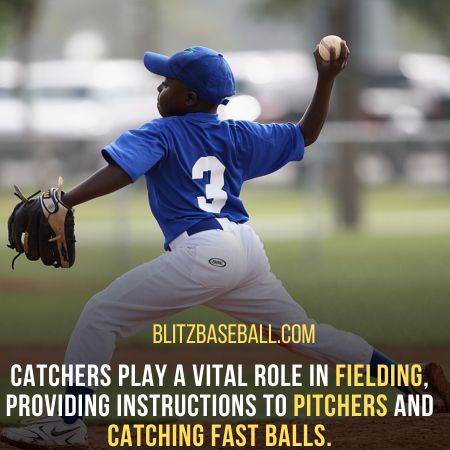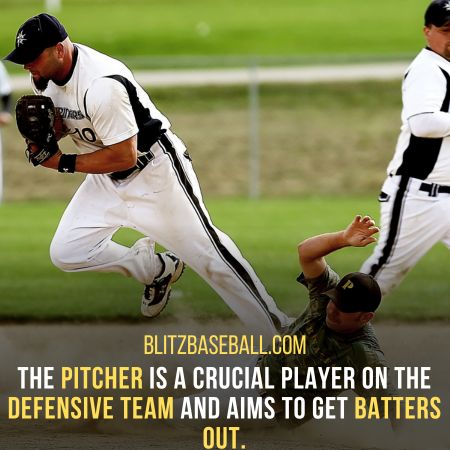Baseball fielding is a crucial aspect of the game, involving the defensive team’s responsibilities of defense and catching to prevent the opposing team from scoring runs.
The fielding positions, including pitcher, catcher, infielder, and outfielder, each have distinct roles and responsibilities.
The pitcher is instrumental in getting batters out, while the catcher acts as the leader of the fielding team, providing instructions and support.
The infield positions, such as the first baseman, second baseman, third baseman, and shortstop, have specific areas to defend and require different skills and coordination.
The outfielders, comprising the left fielder, center fielder, and right fielder, cover a large area and play a vital role in catching fly balls and supporting the infield players.
To excel in baseball fielding, players must possess strong hands, quick feet, and specific skills.
This article aims to provide a comprehensive understanding of baseball fielding basics, accompanied by professional tips to enhance performance.
Key Takeaways
- Fielding is an essential part of the baseball game, focusing on defense and catching.
- Different positions in fielding have different responsibilities and roles.
- The pitcher is a crucial player on the defensive team and aims to get batters out.
- Catchers play a vital role in fielding, providing instructions to pitchers and catching fast balls.
Baseball Fielding Basics
Fielding Basics in baseball involve the defensive team’s responsibilities of defense and catching, as well as the different positions and their specific roles in preventing the offensive team from scoring runs. Fielding techniques play a crucial role in the success of the defensive team.
Each fielding position has its own importance and responsibilities. For example, the pitcher is the most important player on the defensive team and aims to get batters out and prevent runs.
The catcher, known as the General of Baseball Fielding, directly catches balls from pitchers and provides instructions to them.
The first baseman prevents runners from advancing to first base and is often the tallest and most engaged player. Similarly, the second baseman and third baseman have their unique roles in the field.
The shortstop, playing between second and third base, is considered one of the most difficult positions to play and plays a vital role in the double-play machine.
Outfielders, including the left fielder, center fielder, and right fielder, cover large areas and are responsible for catching fly balls and preventing baserunners from advancing.
Fielding positions and techniques are essential for a successful defensive team.
Pitching
Pitching requires accuracy, speed, and strategic decision-making to prevent batters from scoring runs. It is a crucial aspect of the defensive team’s efforts in a baseball game.
Pitchers employ various techniques to pitch accurately and quickly, aiming to get batters out and avoid giving up runs.
Different types of pitchers fulfill specific roles within the team, such as the starting pitcher, reliever, and closer. Starting pitchers typically throw for several innings consecutively, while relief pitchers take over when the starting pitcher needs a break.

Pitchers must possess speed, which can be enhanced through specific techniques. Overall, pitching is a skill that demands precision, speed, and the ability to make effective strategic decisions on the field.
-
Pitching techniques
-
Different types of pitchers
-
Strategic decision-making in pitching
Catcher
The catcher position in baseball requires strong muscles and accurate catching skills to receive pitches from the pitcher and provide instructions to the pitching staff. The catcher plays a crucial role in the fielding team’s communication and coordination.
They have an unobstructed view of the field and can call out instructions to the pitchers based on the game situation. Additionally, catchers need to be skilled in blocking pitches to prevent runners from advancing on wild pitches or passed balls.
They wear special catching equipment for safety, including a mask, chest protector, and shin guards. The catcher’s role extends beyond catching pitches, as they inspire and provide confidence to the pitchers, acting as the general of the fielding team.
| Catcher’s Role in Communication | Catcher’s Role in Blocking Pitches |
|---|---|
| Calls out instructions to pitchers | Prevents runners from advancing on wild pitches or passed balls |
| Coordinates with the pitching staff | Requires quick reflexes and positioning |
| Provides confidence and leadership | Utilizes specialized catching equipment |
First Baseman
First basemen, positioned near first base, play a vital defensive role in preventing runners from advancing to first and are often the tallest and most engaged players on the field.
The first baseman’s primary responsibility is to field the area next to first base and prevent opposing players from reaching the base safely.
To fulfill this role, first basemen need to be experts at their position, possessing the skills to catch and field the ball efficiently. They must also possess accurate throwing arms to make quick and long-distance throws.
Additionally, first basemen are powerful hitters, contributing offensively to the team. Good first basemen lead to more assists and fewer mistakes, as they are adept at making plays and preventing baserunners from advancing.
Their defensive strategies include positioning themselves correctly, anticipating plays, and communicating effectively with other infielders.

Second Baseman
Second basemen, positioned near second base, play a crucial role in the fielding team’s defense. They cover the middle infield and bases, execute double plays, and release the ball quickly to prevent baserunners from advancing safely.
Double play techniques are an essential aspect of a second baseman’s defensive strategies. They must have the ability to quickly turn a ground ball into a double play. This involves catching the ball, stepping on second base, and throwing it accurately to first base.
Second basemen also need to have excellent communication skills. They often coordinate with the shortstop to cover bases and execute double plays effectively.
In addition to communication, second basemen must have a quick release when throwing the ball. Positioned between first and third base, they need to prevent baserunners from advancing.
Overall, second basemen play a vital role in the fielding team’s defense and contribute significantly to the team’s success.
Third Baseman
Positioned near third base, the third baseman defends the area closest to the hitter at home plate and requires good hand-eye coordination and accurate throwing arms to prevent baserunners from advancing. The third baseman plays a crucial role in the defensive strategy of the team, and there are various techniques and strategies they can employ to excel in their position.
Here is a table outlining three key defensive techniques that third basemen commonly utilize:
| Technique | Description |
|---|---|
| Charging the Bunt | When a bunt is anticipated, the third baseman moves in quickly towards home plate to field the ball and make a throw to first base. This requires quick reflexes and accurate throwing skills. |
| Fielding Ground Balls | Third basemen must be proficient in fielding ground balls hit towards their area. They need to quickly react, get into a low and balanced position, and make an accurate throw to first base or initiate a double play if necessary. |
| Covering the Line | The third baseman needs to position themselves close to the foul line to prevent hits down the line from turning into extra bases. They also need to be ready to field any hard-hit balls in their direction and make an accurate throw to stop baserunners from advancing. |
By employing these defensive techniques, the third baseman contributes significantly to the team’s overall defense and helps prevent runs from scoring.
Shortstop
Moving on from the previous subtopic of the Third Baseman, we now delve into the role of the Shortstop in baseball fielding.
The Shortstop, positioned between second and third base, holds a crucial position in the defensive team. An effective Shortstop must possess exceptional athleticism, as they are required to be nimble, quick, and powerful athletes.
Communication plays a vital role in this position, as the Shortstop acts as the primary communicator to outfield players, relaying important information about the game.
To excel as a Shortstop, fielders can employ various strategies for improving their fielding skills. These strategies may include focusing on footwork, body positioning, and anticipating plays.
Additionally, honing hand-eye coordination and practicing quick release techniques are crucial for successful double plays.
By implementing these strategies, Shortstops can enhance their fielding abilities and contribute significantly to the defensive efforts of their team.
-
The Shortstop’s role in communication and coordination with outfield players.
-
Strategies for improving footwork and body positioning as a Shortstop.
-
The importance of hand-eye coordination and quick-release techniques for successful double plays.
-
How Shortstops contribute to the overall defensive efforts of the team.

Frequently Asked Questions
How do fielders communicate with each other during a game?
Fielders communicate with each other during a game through various techniques. They use verbal cues, hand signals, and eye contact to coordinate their movements and positioning on the field. Effective communication is crucial for fielders to ensure proper coverage and prevent defensive lapses.
What are some common fielding drills that players can practice to improve their skills?
Some common fielding drills that players can practice to improve their skills include ground ball drills, fly ball drills, reaction drills, and relay drills. These drills help fielders develop their agility, hand-eye coordination, and communication with other players on the field.
How do fielders position themselves differently based on the count or the batter’s tendencies?
Fielders position themselves differently based on the count or the batter’s tendencies by adjusting their positioning on the field. They communicate with their teammates to anticipate the batter’s hits. Advanced techniques and fielding drills help fielders react quickly to baserunner speed and agility.
What are some advanced fielding techniques that experienced players use?
Some advanced fielding techniques that experienced players use include the drop step, read and react, backhand plays, and the relay throw. These techniques enhance a fielder’s ability to make difficult plays and contribute to their team’s defensive success.
How do fielders adjust their positioning based on the speed and agility of the baserunners?
Fielders’ defensive strategy involves adjusting their positioning based on the speed and agility of baserunners. They anticipate and react to the baserunners’ movements, positioning themselves to cut off angles and make quick throws to prevent baserunners from advancing.
Conclusion
In conclusion, baseball fielding involves a team’s defensive responsibilities to prevent the opposing team from scoring runs. Each fielding position, including the pitcher, catcher, infielders, and outfielders, has specific roles and responsibilities.
The fielders need strong hands, quick feet, and specific skills to excel in their positions. Pitchers play a crucial role in getting batters out, while catchers act as the general of fielding, providing instructions and support.
First basemen, second basemen, third basemen, and shortstops each have their own areas of focus and responsibilities.
Overall, fielding in baseball requires teamwork, coordination, and specific skills to be successful.
